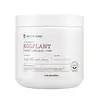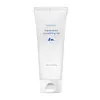What's inside
What's inside
 Key Ingredients
Key Ingredients

 Benefits
Benefits

 Concerns
Concerns

No concerns
 Ingredients Side-by-side
Ingredients Side-by-side

Water
Skin ConditioningDipropylene Glycol
HumectantSolanum Melongena Fruit Extract
Skin ConditioningButylene Glycol
HumectantCetyl Ethylhexanoate
EmollientHydrogenated Polyisobutene
EmollientGlycerin
HumectantJasminum Officinale Extract
MaskingFructan
Skin ConditioningPortulaca Oleracea Extract
Skin ConditioningLavandula Angustifolia Extract
Skin ConditioningPrunus Serrulata Flower Extract
Skin ConditioningLithospermum Officinale Root Extract
Skin ConditioningPolyglutamic Acid
Skin ConditioningTrehalose
HumectantPanthenol
Skin ConditioningGlyceryl Acrylate/Acrylic Acid Copolymer
Humectant1,2-Hexanediol
Skin ConditioningAcrylates/C10-30 Alkyl Acrylate Crosspolymer
Emulsion StabilisingAmmonium Acryloyldimethyltaurate/Vp Copolymer
Hydroxyethyl Acrylate/Sodium Acryloyldimethyl Taurate Copolymer
Emulsion StabilisingHydroxyacetophenone
AntioxidantAllantoin
Skin ConditioningDisodium EDTA
Ethylhexylglycerin
Skin ConditioningTromethamine
BufferingAniba Rosodora Wood Oil
AstringentWater, Dipropylene Glycol, Solanum Melongena Fruit Extract, Butylene Glycol, Cetyl Ethylhexanoate, Hydrogenated Polyisobutene, Glycerin, Jasminum Officinale Extract, Fructan, Portulaca Oleracea Extract, Lavandula Angustifolia Extract, Prunus Serrulata Flower Extract, Lithospermum Officinale Root Extract, Polyglutamic Acid, Trehalose, Panthenol, Glyceryl Acrylate/Acrylic Acid Copolymer, 1,2-Hexanediol, Acrylates/C10-30 Alkyl Acrylate Crosspolymer, Ammonium Acryloyldimethyltaurate/Vp Copolymer, Hydroxyethyl Acrylate/Sodium Acryloyldimethyl Taurate Copolymer, Hydroxyacetophenone, Allantoin, Disodium EDTA, Ethylhexylglycerin, Tromethamine, Aniba Rosodora Wood Oil
Water
Skin ConditioningGlycerin
HumectantButylene Glycol
Humectant1,2-Hexanediol
Skin ConditioningCarbomer
Emulsion StabilisingPolyglycerin-3
HumectantTromethamine
BufferingEucalyptus Globulus Leaf Extract
PerfumingMentha Arvensis Extract
MaskingAloe Barbadensis Leaf Extract
EmollientCymbopogon Citratus Extract
Skin ConditioningPanthenol
Skin ConditioningEthylhexylglycerin
Skin ConditioningTremella Fuciformis Polysaccharide
Emulsion StabilisingHydrolyzed Hyaluronic Acid
HumectantDisodium EDTA
Sodium Hyaluronate
HumectantErythritol
HumectantWater, Glycerin, Butylene Glycol, 1,2-Hexanediol, Carbomer, Polyglycerin-3, Tromethamine, Eucalyptus Globulus Leaf Extract, Mentha Arvensis Extract, Aloe Barbadensis Leaf Extract, Cymbopogon Citratus Extract, Panthenol, Ethylhexylglycerin, Tremella Fuciformis Polysaccharide, Hydrolyzed Hyaluronic Acid, Disodium EDTA, Sodium Hyaluronate, Erythritol
 Reviews
Reviews

Ingredients Explained
These ingredients are found in both products.
Ingredients higher up in an ingredient list are typically present in a larger amount.
1,2-Hexanediol is a synthetic liquid and another multi-functional powerhouse.
It is a:
- Humectant, drawing moisture into the skin
- Emollient, helping to soften skin
- Solvent, dispersing and stabilizing formulas
- Preservative booster, enhancing the antimicrobial activity of other preservatives
Butylene Glycol (or BG) is used within cosmetic products for a few different reasons:
Overall, Butylene Glycol is a safe and well-rounded ingredient that works well with other ingredients.
Though this ingredient works well with most skin types, some people with sensitive skin may experience a reaction such as allergic rashes, closed comedones, or itchiness.
Learn more about Butylene GlycolDisodium EDTA plays a role in making products more stable by aiding other preservatives.
It is a chelating agent, meaning it neutralizes metal ions that may be found in a product.
Disodium EDTA is a salt of edetic acid and is found to be safe in cosmetic ingredients.
Learn more about Disodium EDTAEthylhexylglycerin (we can't pronounce this either) is commonly used as a preservative and skin softener. It is derived from glyceryl.
You might see Ethylhexylglycerin often paired with other preservatives such as phenoxyethanol. Ethylhexylglycerin has been found to increase the effectiveness of these other preservatives.
Glycerin is already naturally found in your skin. It helps moisturize and protect your skin.
A study from 2016 found glycerin to be more effective as a humectant than AHAs and hyaluronic acid.
As a humectant, it helps the skin stay hydrated by pulling moisture to your skin. The low molecular weight of glycerin allows it to pull moisture into the deeper layers of your skin.
Hydrated skin improves your skin barrier; Your skin barrier helps protect against irritants and bacteria.
Glycerin has also been found to have antimicrobial and antiviral properties. Due to these properties, glycerin is often used in wound and burn treatments.
In cosmetics, glycerin is usually derived from plants such as soybean or palm. However, it can also be sourced from animals, such as tallow or animal fat.
This ingredient is organic, colorless, odorless, and non-toxic.
Glycerin is the name for this ingredient in American English. British English uses Glycerol/Glycerine.
Learn more about GlycerinPanthenol is a common ingredient that helps hydrate and soothe the skin. It is found naturally in our skin and hair.
There are two forms of panthenol: D and L.
D-panthenol is also known as dexpanthenol. Most cosmetics use dexpanthenol or a mixture of D and L-panthenol.
Panthenol is famous due to its ability to go deeper into the skin's layers. Using this ingredient has numerous pros (and no cons):
Like hyaluronic acid, panthenol is a humectant. Humectants are able to bind and hold large amounts of water to keep skin hydrated.
This ingredient works well for wound healing. It works by increasing tissue in the wound and helps close open wounds.
Once oxidized, panthenol converts to pantothenic acid. Panthothenic acid is found in all living cells.
This ingredient is also referred to as pro-vitamin B5.
Learn more about PanthenolTromethamine helps balance the pH and improve the texture of a product. It is synthetically created.
As an emulsifier, Tromethamine prevents oil and water ingredients from separating. This helps stabilize the product and elongate a product's shelf life. Tromethamine also makes a product thicker.
Tromethamine helps balance the pH level of a product. Normal pH level of skin is slightly acidic (~4.75-5.5). The acidity of our skin is maintained by our glands and skin biome. Being slightly acidic allows our skin to create an "acid mantle". This acid mantle is a thin barrier that protects our skin from bacteria and contaminants.
Oral Tromethanmine is an anti-inflammatory drug but plays the role of masking, adding fragrance, and/or balancing pH in skincare.
1,3-Propanediol, 2-amino-2-(hydroxymethyl)-
Learn more about TromethamineWater. It's the most common cosmetic ingredient of all. You'll usually see it at the top of ingredient lists, meaning that it makes up the largest part of the product.
So why is it so popular? Water most often acts as a solvent - this means that it helps dissolve other ingredients into the formulation.
You'll also recognize water as that liquid we all need to stay alive. If you see this, drink a glass of water. Stay hydrated!
Learn more about Water